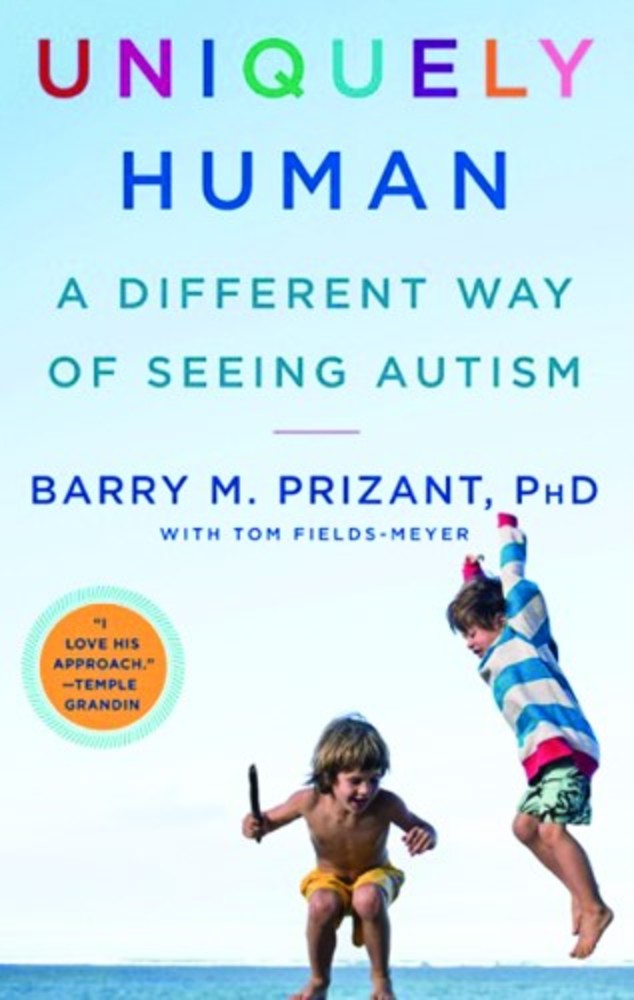A ‘Uniquely Human’ look at autism

It was a pleasure to read Barry Prizant’s new book, “Uniquely Human,” published by Simon and Schuster (2015).
In his book, Prizant, of Cranston, reflects on the knowledge he has gained from his many years as a clinical scholar, consultant, researcher and program consultant in the world of autism.
I know Prizant professionally and am proud to say he is a friend of mine. It came as no surprise to discover that his book is full of compassion and practical advice.
I have always been impressed by Prizant’s family-centered, gentle approach with autistic people: he promotes collaboration with families as well as with professionals. His method is to share his knowledge by giving examples from his work to illustrate various aspects of life and work in the autistic world.
Prizant quotes many of his colleagues throughout his book. Some of the people he has learned the most from are on the autism spectrum and speak from personal knowledge.
Prizant’s major contributions to the study of autism have been through his writings about the concept of “dysregulation.” He describes some characteristics that have come to be considered “autistic behaviors,” which he calls “coping strategies.” He further explains that even those of us not on the autism spectrum use many kinds of coping strategies to deal with stressful situations, but we are also able to regulate ourselves and respond to difficult situations in a more socially acceptable way.
Obsessions, which are common with people on the autism spectrum, are described as “enthusiasms” – which certainly paints a more optimistic picture of those folks with deep interests and talents.
One of my favorite parts of “Uniquely Human” was when Prizant related a parent’s description of the type of person who works best with his child. That person is an “IT” person: Someone who “gets it,” someone who understands the needs of one particular autistic person.
There is no cookie-cutter approach to helping the autistic, just as there is no cookie-cutter description of an autistic person. The best person to work with an autistic individual doesn’t necessarily need to have a lot of training at first, he just needs to see the autistic person for who he or she is, and feel compassion and understand his or her “uniqueness.”
We have all seen professionals with doctorates in the field who believe in stern consequences for “behaviors” rather than listening and observing – these people should read Prizant’s book.
Prizant quoted Michael John Carley, an adult with Asperger’s syndrome, on what he needs to feel regulated. Carley said, “The opposite of anxiety isn’t calm, it’s trust.” Those who deal with autistic persons must learn to create a warm and trusting environment, but must first learn from each autistic person what that entails.
Prizant was very helpful to Temple Emanu-El, in Providence, where he is a member, when he joined a small committee of parents and professionals who set up a monthly Shabbat morning service for a few families who were seeking a safe and trusting environment for their children with exceptional needs. These families wanted a place where anyone could get up and move about, where singing and swaying were encouraged, and where no one minded someone suddenly leaving the room or shouting.
Prizant helped the temple establish a warm and sensory-friendly environment where people with special needs, and even those without them, feel welcomed and comfortable.
“Uniquely Human” gives wonderful and empowering – yet practical – information and advice. Even though Prizant reminds readers that there is no magic cure and no “one method” that fits all, he still provides enough guidelines to be extremely helpful.
Families, educators, therapists, clergy and those who have an interest in the world of autism should read this book. Indeed, Prizant’s approach of listening, observing and asking “why” can work with all people, because, after all, we are all uniquely human.
TOBY W. LIEBOWITZ is a special educator and former co-director of the Asperger Association of New England, Rhode Island Chapter.







